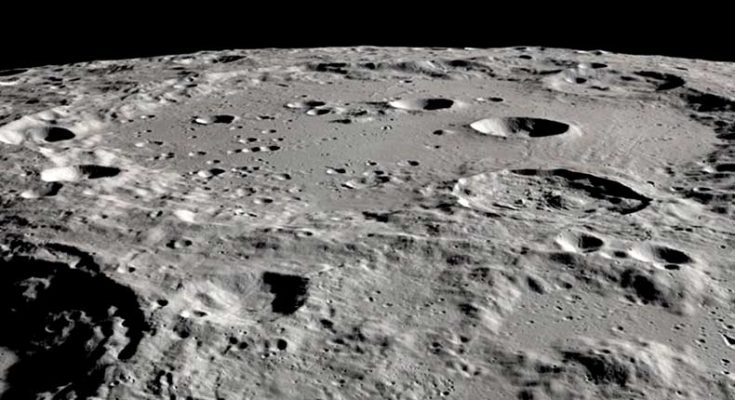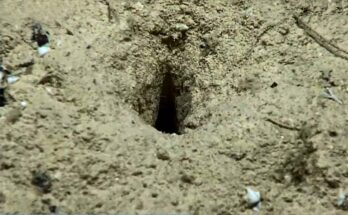Scientists confirmed water on the Moon, both in sunlit and shadow surface. Image Courtesy – WWNO
The Stratospheric Observatory for Infrared Astronomy (SOFIA) of NASA and their scientists confirmed water on the moon, both in sunlit & shadow surface. The discovery revealed that water might be distributed not only in the cold, shadowed surface of the moon but, also across the sunlit surface.
The Stratospheric Observatory for Infrared Astronomy detected water molecules (H2O) in the largest craters, named ‘Clavius Crater’. The crater is visible from the Earth and is located in the southern hemisphere of the moon. The previous observations could not distinguish the difference between the hydroxyl (OH) molecule and a water molecule (H2O).
This observation revealed that water was present in concentrations of 100 to 412 parts/million. The observation was published in the latest issue of the peer-reviewed scientific journal ‘Nature Astronomy’. It has been focused that the quantity of water was approximately equivalent to 12-ounce, and was spread across the surface of the moon.
Clavius is the second-largest cavity on the south side of the moon. It has been named after the German mathematician and astronomer Christopher Clavius. This Clavius is one of the oldest cavities on the moon.
Read: Tropical Cyclones are getting intensified by Climate Change
The Boeing 747 SP Jetliner ‘SOFIA‘ kept a close eye on the lunar cavities from an altitude of 45,000 feet. Jetliner ‘SOFIA’ is a joint venture between NASA and the German Aerospace Center. This is actually an airborne observatory. Inside the belly of this jet plane, a huge telescope is there. This telescope is designed for infrared astronomy. ‘SOFIA’ monitors the Earth’s atmosphere. Its infrared telescope has captured water molecules in the Clavius crater and then the scientists confirmed water on the moon.
A leading scientist of India and the previous Chairman of ISRO, G Madhavan Nair delivered a lecture at an International Conference on the 22nd February in 2015. He mentioned there that the presence of water on the Moon was already declared in the scripts of the Vedas around 1400 BC. He also mentioned that it had not been possible for the modern scientists to decode it because it was written with a ‘condensed format’ in the Sanskrit language.
Nair also mentioned that a few shlokas in one of the 4 Vedas described that there was water on the Moon, but nobody trusted it that time. Although the first lunar mission of ISRO, Chandrayaan-1, was not successful, astronomers said that the Moon’s ice pole was frozen and was caught on the orbit of the Chandrayaan-1.
NASA’s Apollo mission discovered that the back of the moon was very rough and dry in 1989. There could be no drop of water. NASA’s Lunar Crater Observation and Sensing Satellite later reported that the back of the moon was not dry, but the ice had accumulated at the Moon’s pole. Since then, NASA’s multiple lunar missions have found that evidence. The astronauts on the ‘Cassini Mission’ and ‘Deep Impact Comet Mission’ reported the same thing.
Read: Solar energy powering US
Evidence was found earlier that there were oxygen and Hydrogen ions on the noon. According to the pictures and information sent by ISRO’s Chandrayaan-1, it was rusting at the pole of the moon. This clearly denoted that oxygen was reacting with the iron that has accumulated in the dust of the moon. The moon’s iron, water, and oxygen have begun to rust. The phenomenon of rusting in the moon has been for millions of years. Erosion has been taken place at the two poles.
Scientists claimed that oxygen molecules have been flying from the earth to the moon. The magnetosphere can give a little protection to the earth from solar storms. Here the currents of the electromagnetic particles stand as a shield. But the moon does not have a protective cover like the earth. A protective shield is formed in front of the moon as it orbits the earth. When a solar storm comes into space, it cannot do much damage to the moon at that time. This magnetosphere of the earth protects the moon.
Even the Oxygen molecules reach to the moon from this magnetosphere. Researchers say that as the earth rotates, the magnetosphere also rotates with the earth. In this way, the part of the moon that comes close to the magnetosphere during the rotation, the oxygen ions that come out of the earth reach to the moon. The level of oxygen transmission is higher at night because the magnetosphere expands this time.





